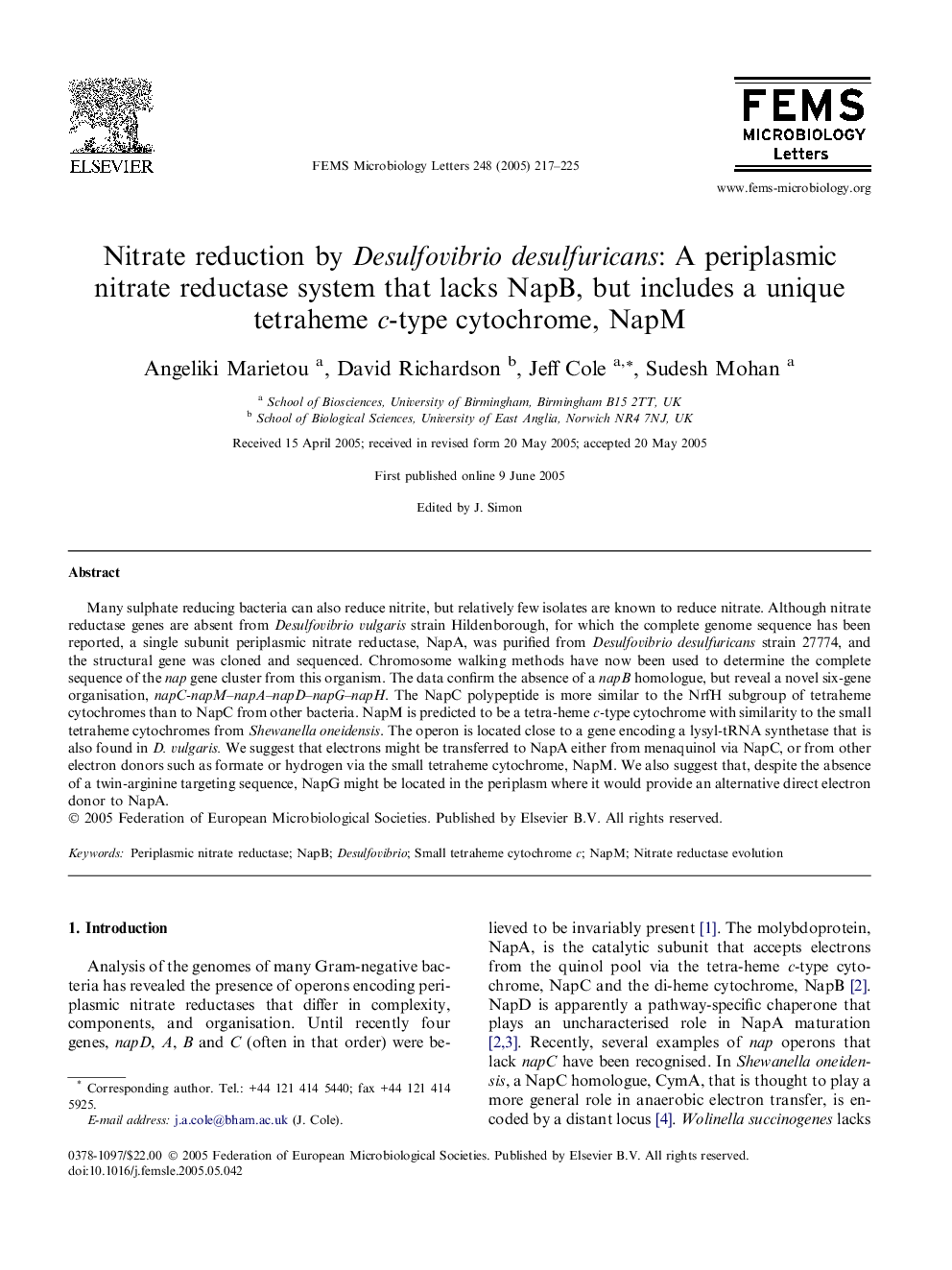| Article ID | Journal | Published Year | Pages | File Type |
|---|---|---|---|---|
| 9121596 | FEMS Microbiology Letters | 2005 | 9 Pages |
Abstract
Many sulphate reducing bacteria can also reduce nitrite, but relatively few isolates are known to reduce nitrate. Although nitrate reductase genes are absent from Desulfovibrio vulgaris strain Hildenborough, for which the complete genome sequence has been reported, a single subunit periplasmic nitrate reductase, NapA, was purified from Desulfovibrio desulfuricans strain 27774, and the structural gene was cloned and sequenced. Chromosome walking methods have now been used to determine the complete sequence of the nap gene cluster from this organism. The data confirm the absence of a napB homologue, but reveal a novel six-gene organisation, napC-napM-napA-napD-napG-napH. The NapC polypeptide is more similar to the NrfH subgroup of tetraheme cytochromes than to NapC from other bacteria. NapM is predicted to be a tetra-heme c-type cytochrome with similarity to the small tetraheme cytochromes from Shewanella oneidensis. The operon is located close to a gene encoding a lysyl-tRNA synthetase that is also found in D. vulgaris. We suggest that electrons might be transferred to NapA either from menaquinol via NapC, or from other electron donors such as formate or hydrogen via the small tetraheme cytochrome, NapM. We also suggest that, despite the absence of a twin-arginine targeting sequence, NapG might be located in the periplasm where it would provide an alternative direct electron donor to NapA.
Related Topics
Life Sciences
Biochemistry, Genetics and Molecular Biology
Genetics
Authors
Angeliki Marietou, David Richardson, Jeff Cole, Sudesh Mohan,
